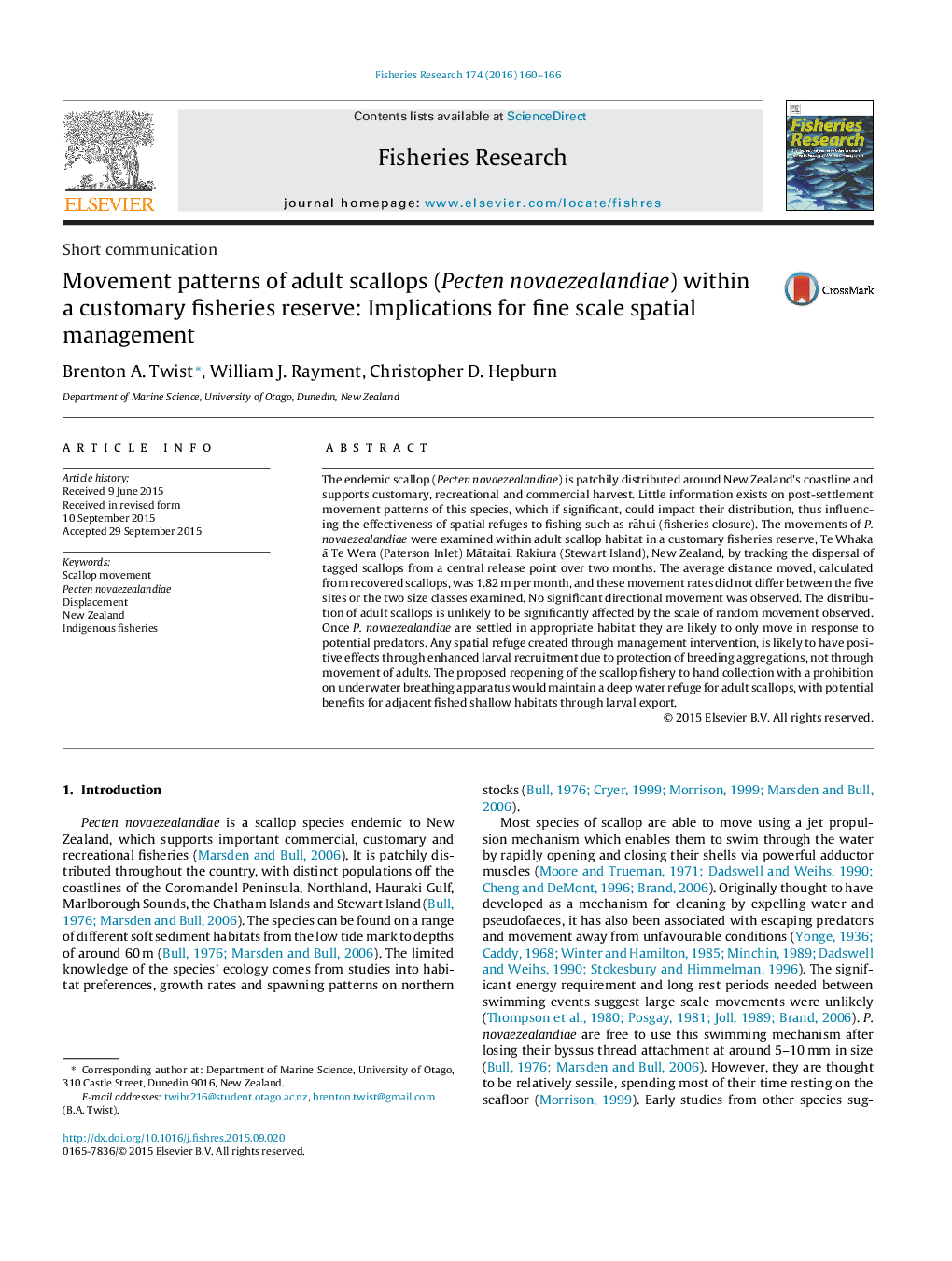| Article ID | Journal | Published Year | Pages | File Type |
|---|---|---|---|---|
| 6385586 | Fisheries Research | 2016 | 7 Pages |
Abstract
The endemic scallop (Pecten novaezealandiae) is patchily distributed around New Zealand's coastline and supports customary, recreational and commercial harvest. Little information exists on post-settlement movement patterns of this species, which if significant, could impact their distribution, thus influencing the effectiveness of spatial refuges to fishing such as rÄhui (fisheries closure). The movements of P. novaezealandiae were examined within adult scallop habitat in a customary fisheries reserve, Te Whaka Ä Te Wera (Paterson Inlet) MÄtaitai, Rakiura (Stewart Island), New Zealand, by tracking the dispersal of tagged scallops from a central release point over two months. The average distance moved, calculated from recovered scallops, was 1.82Â m per month, and these movement rates did not differ between the five sites or the two size classes examined. No significant directional movement was observed. The distribution of adult scallops is unlikely to be significantly affected by the scale of random movement observed. Once P. novaezealandiae are settled in appropriate habitat they are likely to only move in response to potential predators. Any spatial refuge created through management intervention, is likely to have positive effects through enhanced larval recruitment due to protection of breeding aggregations, not through movement of adults. The proposed reopening of the scallop fishery to hand collection with a prohibition on underwater breathing apparatus would maintain a deep water refuge for adult scallops, with potential benefits for adjacent fished shallow habitats through larval export.
Keywords
Related Topics
Life Sciences
Agricultural and Biological Sciences
Aquatic Science
Authors
Brenton A. Twist, William J. Rayment, Christopher D. Hepburn,
